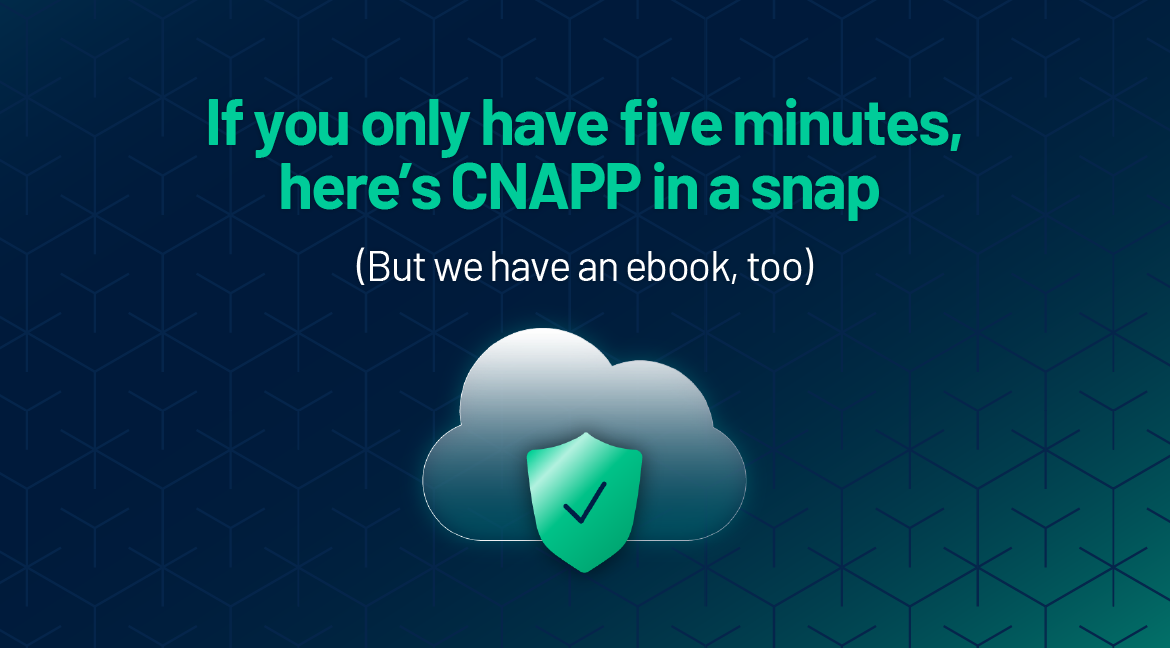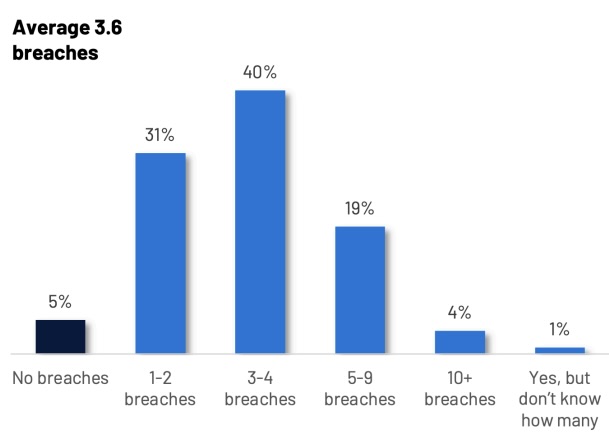If You Only Have Five Minutes, Here’s CNAPP in a Snap (But We Have an eBook, Too)

If you’re a bit puzzled by all the talk about cloud native application protection platforms (CNAPPs), worry not. Our new eBook “Empower Your Cloud: Mastering CNAPP Security” explains in plain English what CNAPP is, how it works and why it’ll help you secure your cloud environment confidently. Read on to check out the eBook’s main highlights.
As organizations move operations to the cloud, the need for robust security measures has never been more critical. Cloud native application protection platforms (CNAPPs) offer comprehensive solutions designed to tackle the myriad threats and vulnerabilities that accompany cloud infrastructures.
Tenable recently published an eBook — “Empower Your Cloud: Mastering CNAPP Security.” You can download it here. This post summarizes the key points. But read the book to get the full story.
The misunderstood shared responsibility model
Cloud security was built on a misleading concept: the shared responsibility model. On its surface, the “shared responsibility” merely outlines the individual security responsibilities of cloud providers and customers. It seems pretty straightforward and the model does provide a framework for understanding security responsibilities. But customer beware: It usually places the onus on you to implement and maintain robust security measures.
A cottage industry rises to add to the confusion
In response to the rush to the cloud, a cottage industry of solutions have popped up that handle a tiny sliver of the cloud security challenge. The end result is product fatigue. In the age of limited resources, when your day job has you focused on threats like ransomware and trying to ensure compliance, there are only so many alerts and systems you can pay attention to. After a while it’s just all noise.
Meanwhile, cloud breaches are almost universal
Amid that noise, the prevalence of cloud breaches underscores the urgency for more complete security measures.
In Tenable's recent "Cloud Security Outlook" report, a staggering 95% of security professionals surveyed reported experiencing a cloud breach within an 18-month period, with an average of 3.6 breaches per respondent. These statistics highlight the pervasive nature of cloud security risks and the need for proactive measures to mitigate them.

(Source: Tenable's "Cloud Security Outlook" report, May 2024)
Amid that noise, the prevalence of cloud breaches underscores the urgency for more complete security measures.
CNAPPs to the rescue
CNAPP solutions replace that patchwork of siloed products that often cause more problems than they solve. Those products usually provide only partial coverage and often create overhead and friction with the products they’re supposed to work with. And, in today's multi-cloud landscape, organizations often work with multiple cloud providers to optimize services and avoid vendor lock-in.
The complexity of securing the cloud is multiplied when it becomes plural: Clouds. Managing security across heterogeneous cloud infrastructures is a big challenge. Plus, traditional security tools provided by individual cloud vendors are often limited to their respective platforms, leading to fragmented security postures.
A comprehensive CNAPP solution includes a wide variety of essential capabilities, including:
- Cloud security posture management (CSPM)
- Cloud infrastructure entitlement management (CIEM)
- Cloud workload protection (CWP)
- Kubernetes security posture management (KSPM)
- Infrastructure as code (IaC) scanning
- Cloud detection and response (CDR)
- Data security posture management (DSPM)
Must-have CNAPP components
As you evaluate CNAPPs, make sure you cover your bases on three key components: Identity and access management to ensure “least privilege” access; vulnerability management to prioritize and remediate vulnerabilities based on their potential impact; and exposure management to gain visibility across cloud environments and mitigate risks that stem from the toxic combinations of vulnerabilities, misconfigurations, and excessive permissions.
How CNAPPs can help you
CNAPPs benefit a wide range of stakeholders involved in cloud security, including security, DevOps, DevSecOps, IAM, and IT teams. A CNAPP also helps those disparate groups collaborate to reduce cloud environment risks.
Enterprises stand to gain a number of advantages, including enhanced visibility, consistent security posture, streamlined infrastructure health, minimal overhead, seamless integration, shift-left security and holistic security coverage.
Check out this short video, in which a Tenable security engineer explains some CNAPP benefits experienced by Tenable customers.
Learn more
To learn more about CNAPPs, read our new eBook “Empower Your Cloud: Mastering CNAPP Security.”
- Cloud
- Cloud

